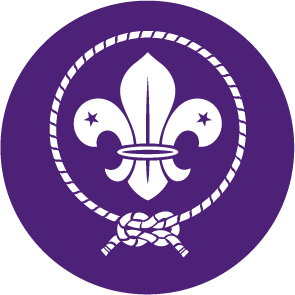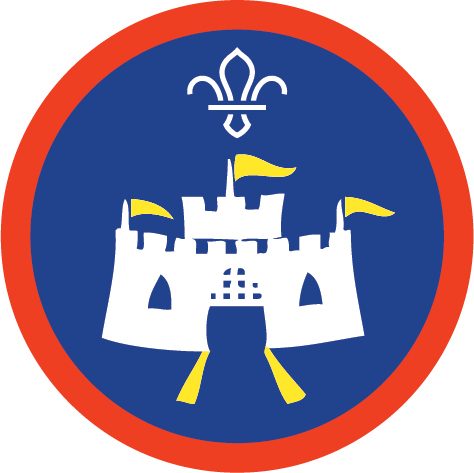
Guess the badge from the past
You’ll need
- Pens or pencils
- Scrap paper
- Printed copies of 1940s badge pictures sheet (one per team)
Before you begin
- Use the safety checklist to help you plan and risk assess your activity. Additional help to carry out your risk assessment, including examples can be found here. Don’t forget to make sure all young people and adults involved in the activity know how to take part safely.
- Make sure you’ll have enough adult helpers. You may need some parents and carers to help if you’re short on helpers.
Remembrance honours people who serve to defend our democratic freedom and way of life. We unite across faiths, cultures, and backgrounds to remember the service and sacrifice of the Armed Forces community from the United Kingdom and the Commonwealth. We will remember them.
- We remember the sacrifice of the Armed Forces community from Britain and the Commonwealth.
- We pay tribute to the special contribution of families and of the emergency services.
- We acknowledge innocent civilians who have lost their lives in conflict and acts of terrorism.
Remembrance does not glorify war and its symbol, the red poppy, is a sign of both Remembrance and hope for a peaceful future. Wearing a poppy isn’t compulsory, but is greatly appreciated by those who it is intended to support. When and how you choose to wear a poppy is a reflection of your individual experiences and personal memories.
Remembrance unites people of all faiths, cultures, and backgrounds but it is also deeply personal. It could mean wearing a poppy in November, joining with others in your community on a commemorative anniversary, or taking a moment on your own to pause and reflect. Everyone is free to remember in their own way, or to choose not to remember at all.
- Armistice Day is the 11 November: it marks the armistice agreement that bought an end to the fighting of the first world war. People pause at 11am on the 11 November to remember service and sacrifice past and present.
- The national service of Remembrance happens on the closest Sunday to 11 November – Remembrance Sunday. Each year people gather at the Cenotaph in London and other memorial sites.
- We call the whole period around these dates Remembrance. There are many ways to take part in Remembrance
In 2022, the Royal British Legion remembers the Service of those who work to protect us and our ways of life. Whether in the Armed Forces, Emergency or Civilian Services, past or present, we remember who has served, how they served, and why it is important that we continue to remember them.
Test your knowledge
- Gather everyone together in a circle.
- Everyone should get into small teams or pairs.
- Give each team a copy of the ‘1940s badge pictures’ sheet. They should work together to figure out what each badge was called,
- Once everyone’s finished, gather everyone together again and reveal the answers. Make sure that everyone knows what all of the words mean, because some may be unfamiliar or new.
- Everyone should look at the badges again. Explain some of the things people had to do to earn the badge.
- Each team should chat about the skills the 1940s Scouts used and how their badge activities may have helped the war effort. We’ve included some information below, but you can read more about what Scouts got up to in the second world war in the Heritage Service’s exhibition.
- The teams should take it in turns to feed back to the group. Can anyone think what a modern equivalent might be for some of the badges? Were any of the skills similar to the ones Scouts use today?
- Everyone should think about how they could use their skills to help in their community. There are plenty of ways to make a difference, such as gathering donations for food banks, planting wildflowers or leaving positive pebbles for people to find.
Learn about badges back then
- A modern equivalent could be the Air Spotter Activity Badge.
- For the Air Spotter badge, Scouts had to be able to recognise different aircraft and keep a log of the aircraft they saw for a month.
- This was useful because Scouts could report plane sightings to the authorities, especially if they saw any crash or saw people with parachutes jumping from the planes.
(This is image A on the ‘1940s badge pictures’ sheet.)
- A modern equivalent could be the Emergency Aid Staged Activity Badge.
- For the First Aid badge, Scouts needed to understand basic techniques to stop bleeding, and be able to apply bandages, build stretchers, and call the emergency services.
- This was useful because Scouts volunteered as stretcher bearers and supported the ambulance service during the Blitz. Scouts may have been able to look after people with minor injuries while ambulance crews focused on people who were more seriously injured.
(This is image B on the ‘1940s badge pictures’ sheet.)
- Modern equivalents that use similar skills could include the Community Impact Staged Activity Badge, Communicator Activity Badge, Emergency Aid Staged Activity Badge or the Local Knowledge Activity Badge.
- For the Civil Defence badge, Scouts had to know how to carry messages, have knowledge of their local area, know how to fit gas masks, and know how to handle a crowd in a panic.
- These skills were useful because Scouts with bikes were recruited as messengers, so being able to carry a message was really important. Not all Scouts would’ve had access to a telephone, so Scouts was a great place to learn the skills they needed. The authorities were worried about the use of gas attacks, so everyone was given a gas mask. It was important that people knew how to wear and maintain their gas masks so they could keep them safe if there was an emergency.
(This is image C on the ‘1940s badge pictures’ sheet.)
- Modern equivalents could include the Builder Activity Badge, DIY Activity Badge or the Skills Challenge Award.
- For the Handyman badge, Scouts had to know about painting and decorating, sharpening tools, sewing on buttons, and adjusting a lawnmower.
- Sewing was useful because clothes were rationed, so being able to mend things was important. Lots of plumbers and electricians were called up to serve in the armed forces, so there was a shortage of plumbers and electricians left in the UK. Being able to do basic tasks around the house would’ve saved time and money, especially if the adults the Scouts lived with were away serving in the armed forces or working. Scouts also supported their community by helping to build air raid shelters, so their DIY skills would’ve been useful for this too.
(This is image D on the ‘1940s badge pictures’ sheet.)
- A modern equivalent could be the Fire Safety Activity Badge.
- For the Firefighter badge, Scouts needed to understand a range of fire hazards, and to be able to deal with different types of fire, escape smoke, and alert the fire brigade.
- These skills were useful because bombing raids during the blitz caused massive fires, and Scouts helped to support fire services. Scouts were also stationed in high buildings so they could keep a look-out for fires and send information to the emergency services.
(This is image E on the ‘1940s badge pictures’ sheet.)
- Modern equivalents could include the International Activity Badge, Hobbies Activity Badge or the Communicator Activity Badge.
- For the Interpreter badge, Scouts needed to be able to do certain things in another language, including speaking for three minutes, writing a short letter, and translating part of a book.
- Language skills were useful because during the second world war, the UK welcomed refugees from lots of different countries, including lots of children. Even knowing a few words in another language was useful for helping refugees feel welcome.
(This is image F on the ‘1940s badge pictures’ sheet.)
- Modern equivalents could include the Local Knowledge Activity Badge or Navigator Staged Activity Badge.
- For the Guide or Pathfinder badges, Scouts needed to show local knowledge, guide strangers with directions, and have some knowledge of local history.
- This was useful because during the second world war, road signs were moved in case there was an invasion. It was really important that people knew their way around their local area and helped other people they knew too.
(This is image G on the ‘1940s badge pictures’ sheet.)
- A modern equivalent could be the Communicator Activity Badge.
- For the Wirelessman badge, Scouts had to be able to operate a wireless (another word for a radio), know how to tune it properly, and describe causes of bad reception on a radio.
- Amateur radio was very popular before the second world war. Radio skills were useful during the war too – amateur radio users were asked to listen out for messages from the enemy and report them to the authorities. Some of the messages ended up at Bletchley Park, home of the code breakers.
(This is image H on the ‘1940s badge pictures’ sheet.)
- A modern equivalent could include the Farming Activity Badge.
- For the Rabbit Farmer badge, Scouts had to know how to keep rabbits, build hutches, and recognise common diseases.
- Being able to farm rabbits was useful during the Second World War because food was rationed and meat was in short supply. Many people kept animals like chickens, rabbits, and pigs for food. Being able to look after them well could help make sure your family wasn’t as hungry.
(This is image I on the ‘1940s badge pictures’ sheet.)
Reflection
This activity was all about being a citizen and developing skills. Scouts make a Promise to do their best, keep the Scout Law, commit to their beliefs and country, and help other people.
In the second world war, people had to play their part to help out – it wasn’t just about the people away fighting, the second world war needed everyone to work together on the home front too.
Can anyone remember some of the ways Scouts helped? How did the skills they learned at Scouts help them to help?
During the second world war, Scouts made a big difference. It’s not just in times of war that Scouts can use their skills to help their communities. What could people do to help their community today?
In this activity, everyone thought about Remembrance and how it links to their lives. What did people find out about Remembrance? How did it make them feel? How are people going to take part in Remembrance this year?
Safety
All activities must be safely managed. You must complete a thorough risk assessment and take appropriate steps to reduce risk. Use the safety checklist to help you plan and risk assess your activity. Always get approval for the activity, and have suitable supervision and an InTouch process.
If people struggle to think of modern equivalents, they could look through a badge book or on the Scouts website.
You could make a list of the 1940s badge names for people to match up with the images – you could even turn this into an active game.
You could get people to guess the requirements, too. You could mix them up and ask people to match them to the badges they belong to.
Print the sheets bigger if anyone needs them to be bigger. People could just chat and remember their answers – they don’t necessarily need to write them down.
All Scout activities should be inclusive and accessible.
Get stuck in to a project to help your local community as part of the Community Impact Staged Activity Badge.
If you want to explore Remembrance further, have a look at A remembrance reflection.

